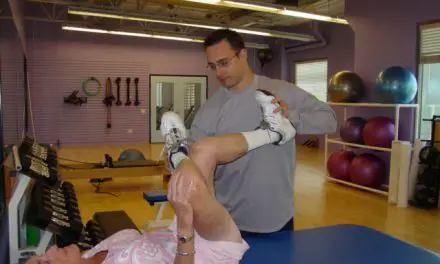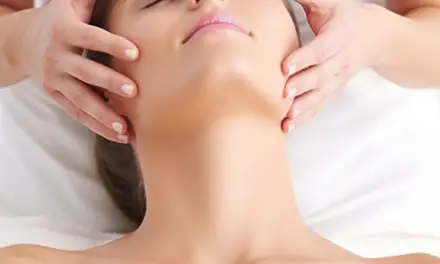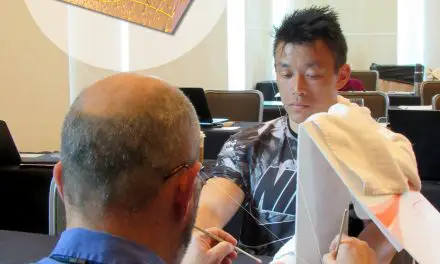Why is there such a difference in massage therapy culture between Canada and the U.S.?
(Originally published in Fall 2016 issue of Massage & Fitness Magazine. Content is based on information up to November 1, 2016.)
Before the 1990s, most of massage therapy education in Canada was similar to the U.S. There was a disparity among what was taught in each massage school. Some emphasized more on the basic sciences, such as anatomy, physiology, and psychology. Some incorporated vitalism and similar topics within their curriculum.
According to Dr. Keith Eric Grant, who among the California Massage Therapy Council (CAMTC), British Columbia and Ontario reorganized their regulation of health professions in early 1990 and into the 2010s.
“They shifted from separate practice acts of the form used in the U.S. to a unified act that provided a small set of reserved (controlled) acts allowed, based on education and training, designations of non-exclusive scopes of practice, and title protection, as well as self-regulating colleges for each profession,” Grant told me in an online interview.
Grant cited this change in British Columbia:
SAFE CHOICES: A New Model for Regulating Health Professions in British Columbia:
“The Terms of Reference set out the framework for an entirely new way of regulating health professions. Heretofore, each regulated profession had an exclusive scope of practice which prohibited others from practising within its scope of practice unless permitted to do so by statute. The new system consists of nonexclusive scope of practice statements and reserved acts.” (1)
“One key concepts from this reorganization is the use of a small and centralized list of reserved (controlled) acts rather than using individual practice acts that carve out exclusive scopes of practice,” Grant explained. “This approach was designed to reduce turf wars between professions, such as that between chiropractic practice and physical therapy and between both of the above and massage therapy.”
Recently, Ann Sleeper, RMT, described the changes of the massage therapy profession in British Columbia since she started in the profession in 1981. (2) It went from an adjunct health profession that primarily did Swedish massage for relaxation to a recognized healthcare ally in the province with its own title “Registered Massage Therapist.”
She described the turf wars between massage therapists and physiotherapists, in which the latter had “dropped massage as an outdated technique years before and didn’t have much respect for it.” This may be because of the lack of scientific research and academic and practical rigor in massage therapy compared to physiotherapy.
Sleeper stated that various manual therapy professions threatened to sue the other if they were to perform certain techniques that they think the “own.” In short, the government stepped in and deregulated all ownership of techniques except for a few that has a high risk of harm. Thus, the turf war ended.
Massage education is also gradually changing in British Columbia, such as pain education is shifting away from the biomechanical model to a “brain and nervous system-centred” model, which rejects much of the explanations proposed by the former. Sleeper speculated that even this model of pain explanation may change over time as science unravels more about our body and mind.
As a result of such changes, the Registered Massage Therapy of British Columbia was formed (formerly called Massage Therapy Association), working with the College of Massage Therapy (CMT) to regulate the massage profession.
“In the early 1980s, Delia Elliot, John Ranny, and Dr. John Yates were dissatisfied with the one-year course that existed at the time, and they wanted to create well-rounded therapists who had the education the scientific and medical background necessary to be primary care providers, who could use their knowledge to properly assess patients and build a treatment plan based on that,” Ken Leong described, who works as a RMT at Sixth Street Massage Therapy Clinic in New Westminster, BC.
“In addition to a literal push for professionalism and research, branding RMTs as frontline healthcare workers for all manner of health issues in the 1990s up to the present day have played a huge roll in making BC’s RMTs what they are today. Overall expectations of professionalism have risen in the last 20 to 30 years.”
So could some U.S. states evolve into something similar to what had happened in British Columbia?

Photo: Registered Massage Therapists of British Columbia
What happened to massage therapy in the U.S.
One major challenge in the U.S. is to get all fifty states to have common grounds in identifying what massage therapy really is, including its scope of practice and education requirements. Healthcare licensing in the U.S. can be traced back to the Supreme Court decision in Dent v. State of West Virginia, 129 U.S. 114 (1889), which set out the principle that the state can limit the practice of occupations when it implements a needed public protection from harms of incompetence and malfeasance. (3) The law states:
“The power of the state to provide for the general welfare of its people authorizes it to prescribe all such regulations as in its judgment will secure or tend to secure them against the consequences of ignorance and incapacity, as well as of deception and fraud. As one means to this end it has been the practice of different states, from time immemorial, to exact in many pursuits a certain degree of skill and learning upon which the community may confidently rely; their possession being generally ascertained upon an examination of parties by competent persons, or inferred from a certificate to them in the form of a diploma or license from an institution established for instruction on the subjects, scientific and otherwise, with which such pursuits have to deal. The nature and extent of the qualifications required must depend primarily upon the judgment of the state as to their necessity.”
“This ruling set aside the objection that occupational regulation violated the provision of the Fourteenth Amendment forbidding any state from depriving ‘any person of life, liberty, or property, without due process of law,’ the right to practice being considered as a type of property,” Grant said.
The final constitutional influence on occupational regulation in the U.S. comes in the Tenth Amendment:
The powers not delegated to the United States by the Constitution, nor prohibited by it to the states, are reserved to the states respectively, or to the people.
Thus, the separate states are largely considered to be sovereign and professional regulation falls within their jurisdiction, not that of the federal government. This results in a lack of a core entity that designates a profession as being part of a healthcare.
“In the U.S., the closest we come to that is likely Medicare,” Grant said. “Beyond that, the determination is far more amorphous and decentralized. Among other factors, the U.S. has fifty states versus Canada’s ten provinces and three territories. Moreover, the basis for regulation in the United States is not to create a health profession but to protect the public from the profession itself.
“While state regulation of massage therapy has generally been framed in terms of public protection, the more immediate motivation has been to get out from under regulation by cities and counties. The language, rather than defining a health profession, is more to correcting the market flaw created by varying — and too often — onerous local regulation. Language in which hour requirements take the place of defined competencies, allowing the insertion of numerous improbable and science-contradicting practices into the core of massage education,” Grant said.
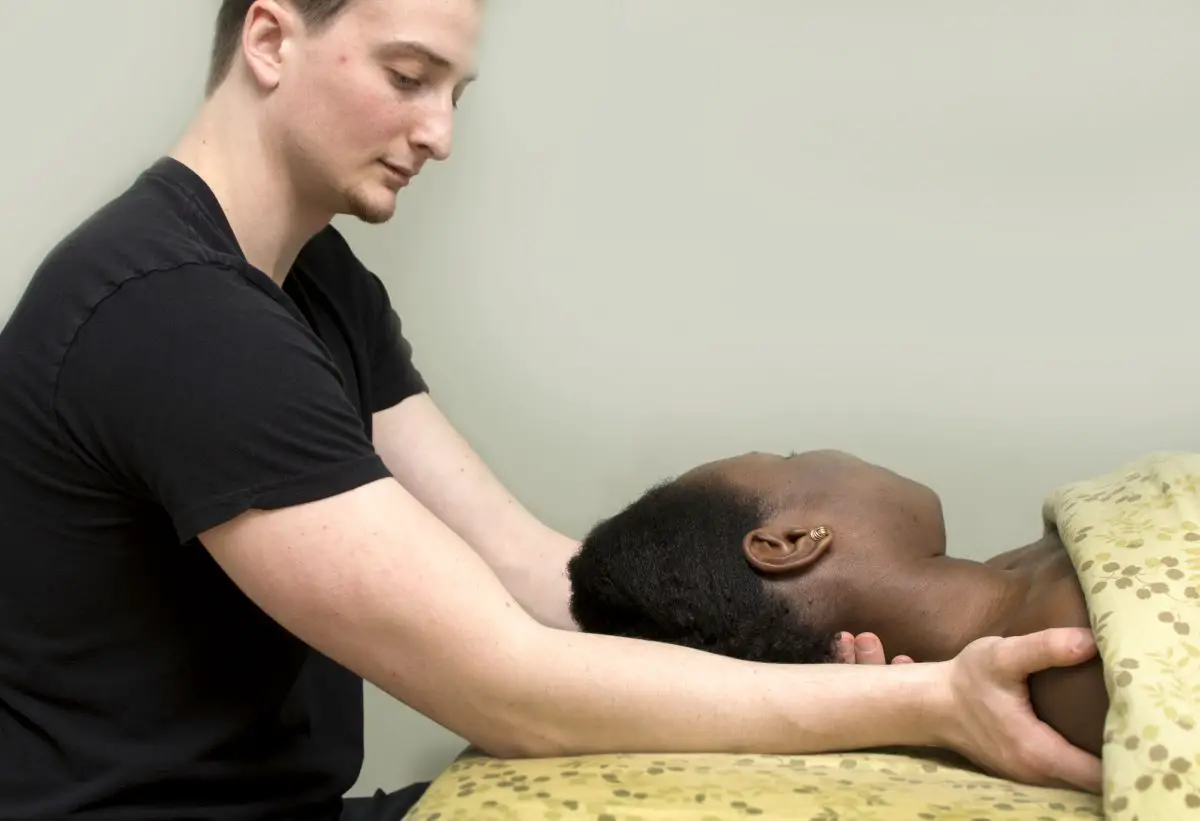
Photo: Zack Miller
How national regulation of massage therapy might happen in the U.S. — or not
Making massage therapy into a legitmate national healthcare profession can be as complex and challenging as solving the daily gridlock of Los Angeles traffic. However, it may be possible since Canada is already taking baby steps to make it happen.
“I think the goal of national regulation is too large to start with,” Lee Kalpin, explained, who has been a RMT and clinic owner in Ontario, Canada, since 1984. “I think regulation on a state-by-state basis needs to be contemplated first. In Canada, we started with one province — Ontario — which has had regulated status since 1919. Then British Columbia became regulated and now we are seeing a ‘snowball’ effect of other provinces that see this as a role model and are working toward regulation. Currently, there are four regulated provinces with a fifth one in the process. It has now become the norm for massage therapists to be part of a regulated health profession.
“I suggest a similar plan could be feasible in the U.S. If a few states have progressive programs that were able to achieve self-regulation, it would set a shining example that other states would eventually want to emulate. I see the American system as being more challenging because of the numbers involved. We have thirteen jurisdictions (ten provinces and three territories) whereas the U.S. has fifty states.”
To have any chance of establishing a national regulation and unity, and for other healthcare professionals see massage therapists as allies, massage therapists and organizations must first establish common grounds in education, scope of practice, and ethics.
“I think that the biggest obstacle is a lack of a shared vision for what the massage therapy profession should be,” said Jason Erickson, who works at Keep In Touch Massage in Eagan, Minnesota, and was the president of the American Massage Therapy Association of the Minnesota chapter. “We have some advocating for a strictly modern science-based healthcare profession, others arguing for a return to traditional or ‘natural’ practices, and others for something that is somewhat regulated but which permits both ends of that spectrum to fully participate.
“And there are others who feel that no regulation whatsoever would be best. Some wish to see a single professional credential, while others envision multiple credentials representing different tiers or types of professional practice. With a shared vision of what massage therapy should be, we could identify and address the obstacles between what is and what it should become more efficiently.”
Erickson also said that the term “massage therapy” does not represent well with what some therapists seek to become. “The creation and adoption of a title that better fits the profession without the historical baggage attached to ‘massage’ may be an appropriate step in crafting a new shared vision for a legitimate healthcare profession,” he said. “Washington state currently comes the closest to recognizing massage therapists as legitimate healthcare professionals. In some ways, their state regulations could be used as a model.”
https://massagefitnessmag.com/massage/how-could-massage-therapy-be-defined-as-a-part-of-healthcare-profession-in-us/
Kalpin pointed out that having a consistent scope of practice and terminology can give the massage profession a more unified identity. “If a sizable number of the more populous and influential states opted for regulation, it could become an attractive goal for associations in other states to aim for,” she suggested. “The first step is for a group of massage therapists to form an association, elect a council, and decide what ‘massage therapy’ means and what they want to accomplish as a group. This sounds simple, but it’s really a big (and sometimes divisive) topic.”
Kalpin suggests several questions that an association must consider:
1) What is massage therapy?
2) What is your scope of practice?
3) If your work is clinical, does it include assessment? Remedial exercise? Hydrotherapy? Are these disciplines permitted under the laws of your state?
“Based on what the council has decided, you compose a scope of practice statement. This is crucial because it describes what you are and what you can do as massage therapists,” she said.
Ontario massage therapy as an example
In Ontario, the College of Massage Therapists of Ontario (CMTO) have their scope of practice definition:
“The practice of massage therapy is the assessment of the soft tissue and joints of the body and the treatment and prevention of physical dysfunction and pain of the soft tissue and joints by manipulation to develop, maintain, rehabilitate of augment physical function, and relieve pain. (Massage Therapy Act, 1991)”
“This statement tells us that massage therapists in Ontario do their own assessments,” Kalpin said. “This means that we are primary treatment providers. We do not need to have a referral from another health professional in order to treat. We assess the client’s needs and develop a plan of treatment.
“It tells us that we treat soft tissue and joints. No mention is made of energy work, meridians, or chakras; therefore, treatment of those ‘structures’ is not in our scope of practice and not part of massage therapy.”
Another factor that could be holding American massage therapy from moving forward is the lack of quality science education, critical thinking and patient-centered practice. If massage therapy were to be a respectful member of the healthcare profession in the 21st century, then it needs to let go of outdated beliefs and use science and humanities as a guide to decision-making and a better practice.
“If we are looking at acceptance, we need to address the idea of what is massage?” Beret Kirkeby questioned, who is the owner of Body Mechanics Orthopedics Massage in New York City. “Massage covers a wide range of activities due to the way the licensing has developed in order to protect the public. If we pare it down to what is holding us back, we need to up the basic level of science to even remotely pass in this area.”
Although even states has different hours of education and training requirements — ranging from 100 to 1,000 hours — Kirkeby suggested that hours are not enough to churn out competent massage therapists because of the inconsistent quality of education among massage schools in the U.S.
“Right now New York requires 1,000 hours of training. There is no standard in the training. I could have a medical massage in one place and then go completely down the street and have another medical massage, and they would be completely different based on what the practitioner was taught on a science level.”
“This is obvious, but education and training are key,” Leong emphasized. “There needs to be a certain proficiency and understanding in the basics of science, biology, physiology, pathology, etc., to understand the disease and illness process in order to understand and be able to work with the general public who may show up at your office any given day or hour with any number of healthcare issues ranging from annoying to potentially life-threatening.
“Education in the responsibilities and ethics of healthcare settings and practices is part of the picture too, as one must be able to work within boundaries of a therapeutic contract, patient privacy, patient consent.”
“We need a shared vision of what our profession should be, a common set of foundational principles, professional practice standards rivaling those of other licensed professions, and instructors who embody and teach these visions, principles, and standards,” Erickson stressed. “Massage therapy as a whole still doesn’t know what it doesn’t know. Entry-level and continuing education would benefit from knowledge of modern psychology, pain science, critical thinking, research literacy, more training in physiology and pathology, and professional discourse including debate.
“Current American massage therapy culture should emphasize competencies rather than hours of training, and teach principles, evidence, and applications rather than modalities. Schools that are more selective about hiring teachers and accepting students are more likely to graduate practitioners that are prepared to be successful in practice. Teachers would benefit from formal training in educational theory and methods in addition to massage therapy knowledge and experience.”
And once a U.S. state can do this successfully, this becomes a strong potential template for other states to adopt and follow.
“Other faces of this question are complex and inter-related, like the confusion between lack of confidence in one’s own analytical and assessment abilities and being client- or patient-centered,” Leong added. “There’s a possibility of a greater aversion to being touched in ‘personal space’ in various places on the body. For example, many licensed therapists are literally scared of treating the glutes, abdomen, or pecs. This only leads to a greater attitude by the public that these are off-limit places and could be a self-fulfilling prophecy.
“This also stems from the lack of therapist confidence and not having the ability to assess and communicate what the therapist thinks best for resolving the clients’ problems. On top of all that, it is further fueled by what seems like an identity confusion between being a problem-solving therapist, who should be respected for those abilities, and just a provider of relaxation techniques that the client can order around like at a spa or Five Guys Burger place.”
Kirkeby also reminded that standard of care is a huge missing link in having a unified massage profession. “We have to have an acceptable framework of care. A client cannot have a situation where they go to one place and say their back hurts and the therapist says, ‘Okay, lie down and I’ll take care of that,’ and then the client goes to another place that does a 20-minute health history and assessment and then gives a full medical consent,” she explained.
“While scopes differ, the way we approach our scopes should not. All healthcare practices should follow a united standard of practice for patient care, and massage should follow that too. We need a structured format for intake, consent, how to give instructions and how to give home care (if that applies to you). This requires competency, and currently, we have no competency requirement.”
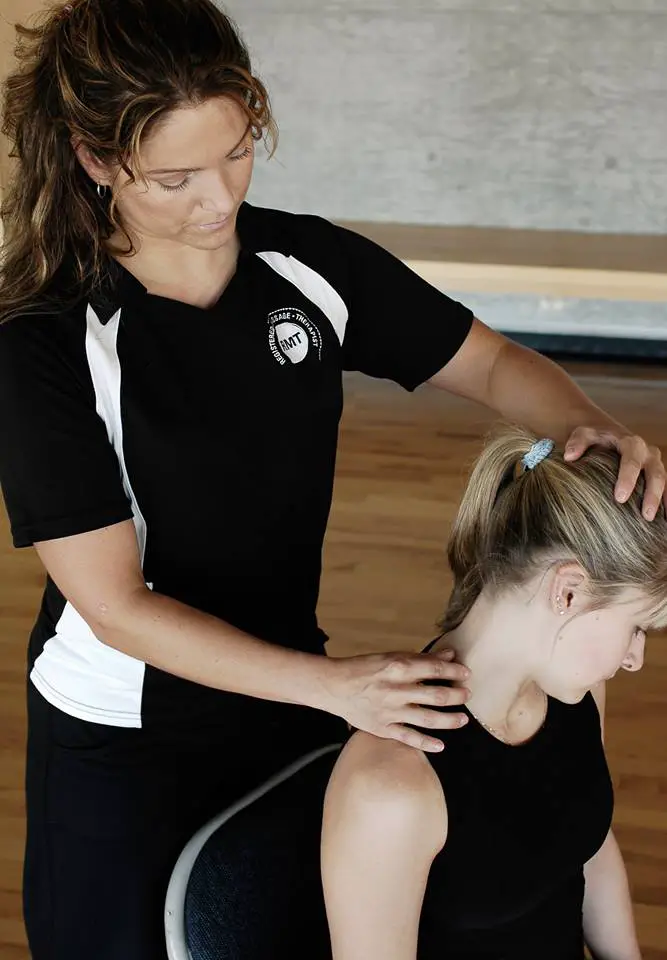
Where does U.S. massage therapy go from here?
There is a growing number of massage therapists in the U.S. — albeit small — who would like to see the massage profession to have a similar status and competency level as Canadian RMTs. Not only do they want to be part of the healthcare team, they also want to break out the stereotypical mold of the typical massage therapist.
“I think those people who are making a difference are doing a great job already,” Kirkeby lauded. “A lot more can be done, and I know it is frustrating, but change takes time. At a certain level you have to wait and see what happens because we are not talking about a small thing; this is hundreds of thousands of people, moving together. Everyone should be working on a small scale to make big change. Individuals need to work at making changes in their own lives and in their peer’s lives to create a bigger movement.
“Not only do therapists need to call out lack of professionalism when they see it, clinic owners and solo practitioners working should mentor other practitioners who have less experience. If change is to occur, there has to be a market for it, and we need to be carving that out daily.”
“You should learn the language of other professionals, like don’t call things ‘adhesions’ that really aren’t, don’t talk about chakras to the referring physician, or talk about ‘releasing’ fascia to anyone else,” Leong suggests. “Until everyone else in your profession is up to speed, you are using orthodox terminology. When you use those types of words that other medical professionals use, use those words with their proper meaning and context.”
Networking with other science-based therapists would be a good start if a state-wide association that regulates professionalism and standards of practice has not yet been achieved. Connecting with healthcare professionals, like physical therapists and physicians at an organizational level is also another option. Compare notes on what they would want from massage therapy for their patients. Perhaps pockets of such networks, a grassroot movement, could be a start.
“Or at least start on an individual level and members meeting with each other and comparing notes,” Leong said. “Maybe that could be one of the building blocks of the eventual professional development of the professional membership in your area, state, or even country one day.”
UPDATE: British Columbia does not have “reserve acts” that Dr. Grant had mentioned in the interview. (Dec. 2, 2019)
A native of San Diego for nearly 40 years, Nick Ng is an editor of Massage & Fitness Magazine, an online publication for manual therapists and the public who want to explore the science behind touch, pain, and exercise, and how to apply that in their hands-on practice or daily lives.
An alumni from San Diego State University with a B.A. in Graphic Communications, Nick also completed his massage therapy training at International Professional School of Bodywork in San Diego in 2014.
When he is not writing or reading, you would likely find him weightlifting at the gym, salsa dancing, or exploring new areas to walk and eat around Southern California.



